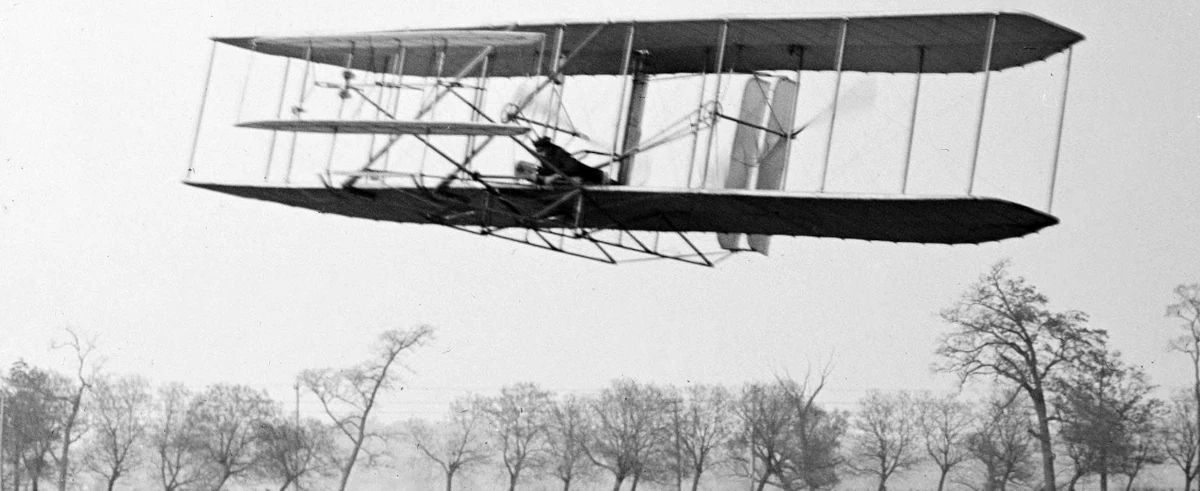David McCullough’s “The Wright Brothers” is a masterful chronicle of American ingenuity and determination. Through meticulous research and engaging storytelling, McCullough brings to life the remarkable journey of Wilbur and Orville Wright from their bicycle shop in Dayton to the historic flights at Kitty Hawk. This book is essential reading for history enthusiasts, aspiring innovators, and anyone fascinated by how ordinary people can achieve extraordinary breakthroughs through methodical problem-solving and unwavering persistence.
Key Concepts
The Importance of Family and Character
The Wright family’s story exemplifies the power of a nurturing intellectual environment. Their father, Bishop Milton Wright, maintained a family library of over 1,000 volumes, encouraging his children to read widely and think critically. This foundation proved crucial: when Wilbur suffered a devastating hockey injury at age 18 that derailed his college plans, he found solace and purpose in these books, spending years in deep study. Their sister Katharine, a college graduate and teacher, not only managed the household but later became their spokesperson in Europe, demonstrating how the family’s collective strength enabled their success.
A Methodical, Scientific Approach
Unlike their contemporaries who relied on trial and error, the Wright brothers approached flight with scientific rigor. In 1901, they built a wind tunnel in their bicycle shop, testing over 200 wing shapes. Their breakthrough came when they discovered that previous aeronautical data tables were fundamentally flawed. Through systematic testing, they created their own accurate measurements, leading to the development of their crucial three-axis control system. This methodical approach set them apart from other aviation pioneers who were literally crashing and burning.
The Significance of the Bicycle Business
The Wright Cycle Company, established in 1892, proved to be more than just a source of income. Their experience with bicycle mechanics directly influenced their aircraft designs - particularly in understanding the importance of balance and control. The brothers applied their knowledge of bicycle chains and sprockets to develop their wing-warping mechanism. The shop’s profits, approximately $2,000-3,000 annually (equivalent to about $60,000-90,000 today), funded their aviation experiments without need for outside investors, preserving their independence.

The Challenge of Kitty Hawk
The brothers chose Kitty Hawk after careful research, corresponding with the Weather Bureau to find a location with steady winds. The conditions were brutal: in 1901, their camp endured winds of up to 75 mph, collapsing their tent and forcing them to sleep under a wing. Mosquitoes were so thick they had to wear netting while eating. Yet these hardships proved crucial - the consistent winds and soft sand were perfect for their experiments. Between 1900 and 1903, they made four extended trips there, each time improving their designs based on hundreds of glider flights.
The First Flight and Its Aftermath
On December 17, 1903, at 10:35 a.m., the Wright Flyer made its historic first flight. Orville piloted the 12-second flight, covering 120 feet. By day’s end, Wilbur had made the longest flight: 852 feet in 59 seconds. Initially, their achievement met with skepticism - the prestigious Scientific American dismissed their claims. It wasn’t until 1908, when they demonstrated their improved aircraft in France and Washington D.C., that they finally received widespread recognition. Their patent battles with Glenn Curtiss and others would consume much of their later years, showing how innovation often faces resistance even after success.
Conclusion
McCullough’s narrative reveals that the Wright brothers’ success stemmed not from a single moment of genius but from years of systematic work, family support, and unwavering dedication. Their story demonstrates how breakthrough innovations often come from outsiders who question established wisdom and methodically pursue solutions. The book offers timeless lessons about the value of persistence, the importance of thorough research, and the power of approaching complex problems with both practical skills and theoretical understanding.
Did you find this content helpful?
While we strive to provide comprehensive summaries, they cannot capture every nuance and insight from the full book. For the complete experience and to support the author's work, we encourage you to read the full book.
Note: You'll be redirected to Amazon.com. We may earn a commission from purchases made through affiliate links on this page.
Recommended Books
-
“Birdmen: The Wright Brothers, Glenn Curtiss, and the Battle to Control the Skies” by Lawrence Goldstone: Expands on the Wright brothers’ story by examining their bitter patent battles with Glenn Curtiss, providing crucial context about early aviation’s commercial development.
-
“The Bishop’s Boys: A Life of Wilbur and Orville Wright” by Tom D. Crouch: Offers deeper insight into the Wright family dynamics and the brothers’ early years, complementing McCullough’s focus on their aviation achievements.
-
“Wings: A History of Aviation from Kites to the Space Age” by Tom D. Crouch: Places the Wright brothers’ achievements within the broader context of aviation history, showing how their innovations influenced subsequent developments.
For readers interested in similar themes of American innovation and perseverance:
-
“The Power Broker” by Robert Caro: A masterful biography of Robert Moses that, like “The Wright Brothers,” examines how determination and methodical work can reshape the world.
-
“The Code Breaker” by Walter Isaacson: Chronicles Jennifer Doudna’s development of CRISPR gene-editing technology, offering another compelling story of scientific breakthrough through persistence and innovation.